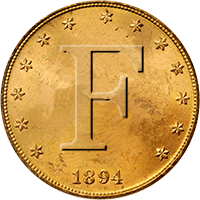dewcon4414
Well-known member
I find and see all these nasty looking coins.... the before and then the after shots. How are you cleaning them... especially those wheats? Ive not found a great method yet for cleaning the copper. Im pretty content with COIN CARE and Q-tips for cleanning silver or even a little bar tenders friend, but the copper is tuff if it gets the crud. Tumbling and electralisis can really destroy them if you are not careful. There should be something short of dinomite to get that heavy bubble gum corrosion off. Ill give you a couple of dont.... dont use brass-o on silver. It removes about anything from it, but sometimes leaves them looking unnatural. Dont mix your copper and silver when tumbling them. Dont forget if you use anything like potatoes, tomatoes or things with acid to dip them in some water with bakeing soda to stop the process.
Dew
Dew

 ?
?